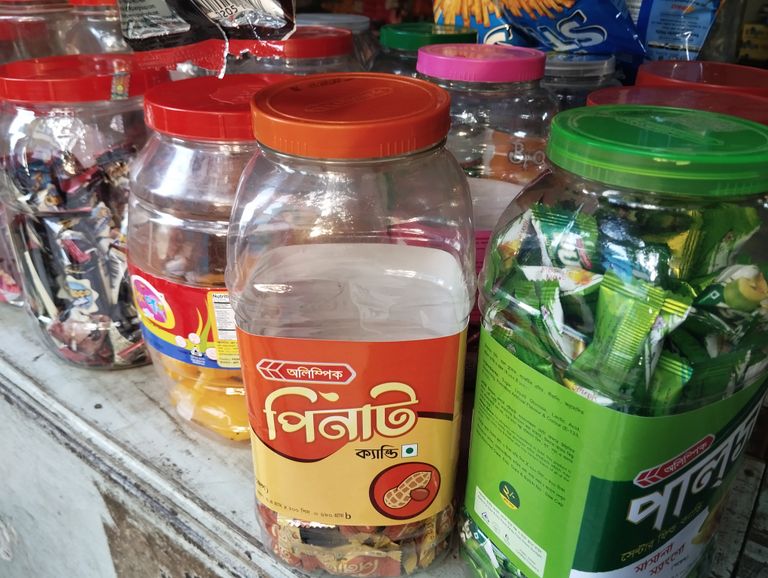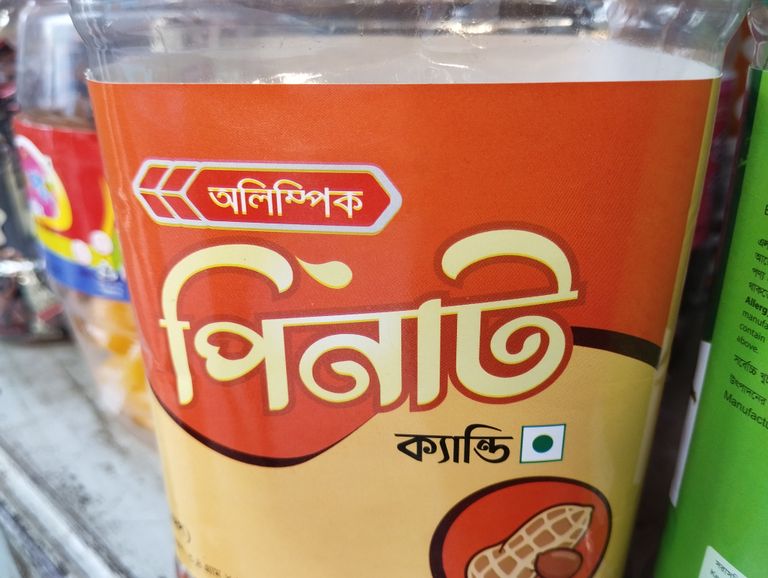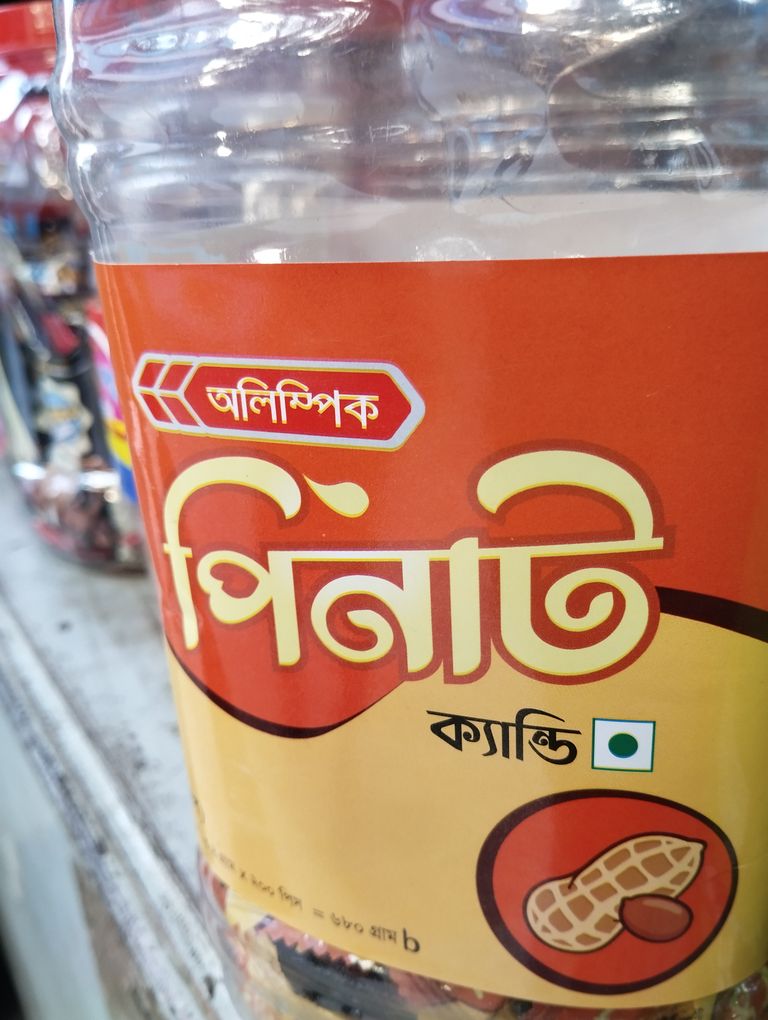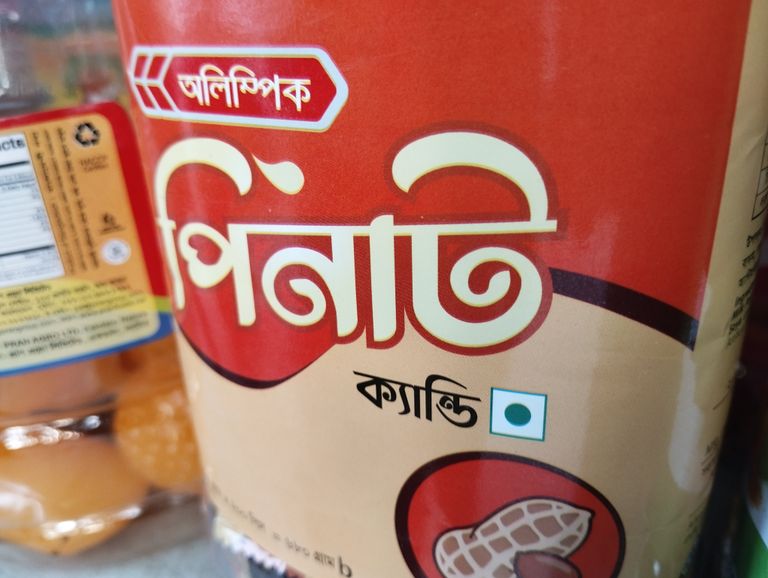
How Peanut Chocolate is Made Ingredients and Process.
Peanut chocolate is a delicious treat enjoyed by people of all ages around the world. Its unique combination of creamy chocolate and crunchy peanuts creates a rich and satisfying flavor that is hard to resist. In this blog, we will explore the ingredients used to make peanut chocolate and understand how this delightful confection is prepared.
Key Ingredients of Peanut Chocolate
- Peanuts
Peanuts are the star ingredient in peanut chocolate. These are typically roasted to enhance their natural nutty flavor and add a crunchy texture. Depending on the recipe, whole peanuts, chopped peanuts, or peanut butter can be used.
- Chocolate
Chocolate is the primary component that brings sweetness and richness to the product. Peanut chocolate can be made using:
Milk Chocolate: Offers a creamy and sweet flavor.
Dark Chocolate: Provides a rich and slightly bitter taste, appealing to those who prefer less sweetness.
White Chocolate: Though less common, it adds a buttery and smooth texture.
- Sugar
Sugar is used to sweeten the chocolate. The quantity may vary depending on the type of chocolate and the desired level of sweetness.
- Cocoa Butter
Cocoa butter is a natural fat extracted from cocoa beans. It gives the chocolate its smooth, melt-in-your-mouth texture.
- Milk Solids
For milk chocolate, milk solids or condensed milk are added to enhance creaminess.
- Emulsifiers
Emulsifiers like lecithin are added to ensure a smooth blend of all ingredients and prevent the chocolate from separating.
- Flavorings
Additional flavors like vanilla, sea salt, or caramel can be included to enhance the taste of peanut chocolate.
How Peanut Chocolate is Made
Step 1: Roasting the Peanuts
The process begins with roasting raw peanuts. Roasting enhances the flavor and crunchiness of the nuts. The roasted peanuts are then cooled and sometimes salted for added flavor.
Step 2: Preparing the Chocolate Base
Cocoa mass, cocoa butter, sugar, and milk solids are melted together to form a smooth chocolate mixture. This mixture is tempered to ensure the chocolate has a shiny finish and a firm texture when set.
Step 3: Mixing the Ingredients
The roasted peanuts are mixed into the tempered chocolate. Depending on the recipe, the peanuts can be evenly distributed throughout the chocolate or layered on top.
Step 4: Molding
The peanut-chocolate mixture is poured into molds. This step determines the final shape of the chocolate, whether it’s a bar, cluster, or bite-sized piece.
Step 5: Cooling and Setting
The molds are cooled in a refrigerator or at room temperature until the chocolate hardens completely.
Step 6: Packaging
Once the chocolate has set, it is removed from the molds, wrapped, and packaged for sale or personal enjoyment.
Why Peanut Chocolate is Loved Worldwide
Peanut chocolate is a favorite for several reasons:
Versatility: It can be enjoyed as a snack, dessert, or gift.
Nutritional Value: Peanuts are rich in protein, healthy fats, and essential vitamins. Combined with the antioxidants in chocolate, this treat offers both taste and health benefits.
Variety: From plain peanut chocolate bars to peanut butter-filled chocolates, there is something for everyone.
Peanut chocolate is a perfect blend of crunchy peanuts and smooth chocolate that creates a delightful taste experience. By combining high-quality ingredients and precise techniques, manufacturers and home cooks alike can create this irresistible treat. Whether you prefer it sweet or slightly bitter, peanut chocolate is sure to satisfy your cravings.

Health Benefits of Eating Peanut Chocolate
Peanut chocolate is a delightful combination of roasted peanuts and rich, creamy chocolate. While it’s often considered an indulgent treat, it also offers several health benefits when consumed in moderation. In this article, we’ll explore the various advantages of eating peanut chocolate and why it can be a healthy addition to your diet.
- Packed with Nutrients
Peanuts and chocolate are rich in essential nutrients. Peanuts are an excellent source of protein, healthy fats, vitamins (such as B-complex vitamins), and minerals like magnesium, phosphorus, and potassium. On the other hand, dark chocolate contains antioxidants, iron, and flavonoids that support overall health.
- Boosts Energy
Peanut chocolate is a calorie-dense snack, making it a great source of quick energy. The combination of carbohydrates from chocolate and protein from peanuts helps provide sustained energy, making it an ideal snack for active individuals or those needing an energy boost during the day.
- Supports Heart Health
Peanuts contain monounsaturated and polyunsaturated fats, which are beneficial for heart health. These fats help reduce bad cholesterol (LDL) levels while increasing good cholesterol (HDL) levels. Additionally, dark chocolate contains flavonoids, which have been shown to improve blood flow, lower blood pressure, and reduce the risk of heart disease.
- Aids in Weight Management
Surprisingly, peanut chocolate can aid in weight management when eaten in moderation. Peanuts are rich in protein and fiber, which promote satiety and prevent overeating. Dark chocolate may help curb sugar cravings, making it a healthier alternative to sugary snacks.
- Enhances Brain Function
Peanuts are a great source of niacin and vitamin E, which are essential for brain health. These nutrients help improve memory and cognitive function. Dark chocolate contains theobromine and caffeine, both of which act as natural stimulants that enhance focus and alertness.
- Contains Powerful Antioxidants
Dark chocolate is loaded with antioxidants like flavonoids, which help combat oxidative stress and reduce inflammation in the body. These antioxidants also play a role in preventing chronic diseases such as diabetes and certain cancers.
- Improves Mood
Chocolate, particularly dark chocolate, is known to stimulate the production of endorphins, the body’s natural feel-good chemicals. It also contains serotonin precursors, which help improve mood and reduce symptoms of depression. The satisfying crunch of peanuts further enhances the sensory experience, making peanut chocolate a mood-boosting treat.
- Promotes Healthy Skin
The antioxidants in dark chocolate protect the skin from damage caused by UV rays and pollution. Peanuts, with their vitamin E content, contribute to skin hydration and repair, making peanut chocolate a treat that supports glowing, healthy skin.
- Provides Essential Minerals
Both peanuts and chocolate are rich in essential minerals. Peanuts are a good source of magnesium, which supports bone health and energy production, while chocolate contains copper and iron, which are vital for blood circulation and oxygen transportation.
- Convenient and Versatile Snack
Peanut chocolate is not only delicious but also highly convenient. It serves as a portable snack for busy individuals and can be used as an ingredient in various recipes, from desserts to granola bars. Its versatility ensures you can enjoy it in multiple ways while reaping its health benefits.
Moderation is Key
While peanut chocolate offers numerous health benefits, it’s important to consume it in moderation. Opt for peanut chocolate made with dark chocolate and unsweetened or lightly salted peanuts for maximum health advantages. Avoid varieties high in sugar and unhealthy trans fats.
Peanut chocolate is more than just a tasty treat; it’s a powerhouse of nutrients that can benefit your health in various ways. From boosting energy and improving mood to supporting heart health and brain function, this combination of peanuts and chocolate is a smart choice for a healthy snack. So, go ahead and indulge in some peanut chocolate, but remember to enjoy it mindfully.

Is Pinaret Chocolate Harmful to Children?
Chocolate is often a favorite treat for children, with its sweet taste and delightful aroma. Among various brands, Pinaret chocolate has gained popularity for its rich flavor and affordability. However, as parents and caregivers, it’s essential to ask the question: Is Pinaret chocolate safe for children?
Let’s explore the ingredients, potential health concerns, and precautions that parents should consider before offering Pinaret chocolate to their kids.
- Ingredients in Pinaret Chocolate
The first step in evaluating the safety of any food product is to examine its ingredients. Pinaret chocolate typically contains:
Sugar: A primary ingredient in most chocolates.
Cocoa solids: Responsible for the rich chocolate flavor.
Milk powder: For a creamy texture.
Artificial flavors and preservatives: Enhance taste and shelf life.
Vegetable oils: Used as an alternative to cocoa butter in some chocolate brands.
While most of these ingredients are common in chocolates, the use of artificial additives and high sugar content raises concerns, especially for children.
- Health Concerns for Children
a) High Sugar Content
Excessive sugar consumption can lead to:
Tooth decay and cavities.
Increased risk of obesity.
Blood sugar spikes, which may cause hyperactivity followed by energy crashes.
b) Artificial Additives
Certain artificial flavors, colors, and preservatives can cause:
Allergic reactions in sensitive children.
Behavioral issues such as hyperactivity in some cases.
Long-term health concerns if consumed frequently.
c) Low-Quality Fats
If Pinaret chocolate uses vegetable oils instead of cocoa butter, it may contain trans fats or saturated fats, which are harmful to cardiovascular health in the long run.
d) Caffeine in Cocoa
While the caffeine content in chocolate is low compared to coffee, even small amounts can affect children by causing:
Restlessness or irritability.
Difficulty sleeping.
- Are There Any Benefits?
Moderate consumption of chocolate, including Pinaret, may offer:
A quick source of energy due to its carbohydrate content.
A boost in mood due to the presence of compounds like theobromine and phenylethylamine.
However, these benefits are minimal compared to the potential risks if the chocolate is consumed excessively.
- Precautions for Parents
a) Check the Ingredients
Always read the label to ensure there are no harmful additives or excessive sugar.
b) Limit Portions
Offer small amounts of chocolate as an occasional treat rather than a regular snack.
c) Encourage Healthy Habits
Pair chocolates with healthier options like fruits or nuts to balance the nutritional intake.
d) Choose High-Quality Alternatives
Opt for chocolates with higher cocoa content and fewer additives. Dark chocolate with at least 70% cocoa is a better option.
- Conclusion
While Pinaret chocolate can be enjoyed occasionally, it is not the healthiest choice for children due to its high sugar content and potential use of artificial additives. Parents should prioritize moderation and monitor their child’s overall diet to ensure a balanced intake of nutrients.
By making informed decisions, you can allow your child to enjoy treats like Pinaret chocolate without compromising their health.
Would you like more tips on healthy snacks for kids? Let me know.

Is Pinaret Chocolate Harmful to Children?
Chocolate is often a favorite treat for children, with its sweet taste and delightful aroma. Among various brands, Pinaret chocolate has gained popularity for its rich flavor and affordability. However, as parents and caregivers, it’s essential to ask the question: Is Pinaret chocolate safe for children?
Let’s explore the ingredients, potential health concerns, and precautions that parents should consider before offering Pinaret chocolate to their kids.
- Ingredients in Pinaret Chocolate
The first step in evaluating the safety of any food product is to examine its ingredients. Pinaret chocolate typically contains:
Sugar: A primary ingredient in most chocolates.
Cocoa solids: Responsible for the rich chocolate flavor.
Milk powder: For a creamy texture.
Artificial flavors and preservatives: Enhance taste and shelf life.
Vegetable oils: Used as an alternative to cocoa butter in some chocolate brands.
While most of these ingredients are common in chocolates, the use of artificial additives and high sugar content raises concerns, especially for children.
- Health Concerns for Children
a) High Sugar Content
Excessive sugar consumption can lead to:
Tooth decay and cavities.
Increased risk of obesity.
Blood sugar spikes, which may cause hyperactivity followed by energy crashes.
b) Artificial Additives
Certain artificial flavors, colors, and preservatives can cause:
Allergic reactions in sensitive children.
Behavioral issues such as hyperactivity in some cases.
Long-term health concerns if consumed frequently.
c) Low-Quality Fats
If Pinaret chocolate uses vegetable oils instead of cocoa butter, it may contain trans fats or saturated fats, which are harmful to cardiovascular health in the long run.
d) Caffeine in Cocoa
While the caffeine content in chocolate is low compared to coffee, even small amounts can affect children by causing:
Restlessness or irritability.
Difficulty sleeping.
- Are There Any Benefits?
Moderate consumption of chocolate, including Pinaret, may offer:
A quick source of energy due to its carbohydrate content.
A boost in mood due to the presence of compounds like theobromine and phenylethylamine.
However, these benefits are minimal compared to the potential risks if the chocolate is consumed excessively.
- Precautions for Parents
a) Check the Ingredients
Always read the label to ensure there are no harmful additives or excessive sugar.
b) Limit Portions
Offer small amounts of chocolate as an occasional treat rather than a regular snack.
c) Encourage Healthy Habits
Pair chocolates with healthier options like fruits or nuts to balance the nutritional intake.
d) Choose High-Quality Alternatives
Opt for chocolates with higher cocoa content and fewer additives. Dark chocolate with at least 70% cocoa is a better option.
- Conclusion
While Pinaret chocolate can be enjoyed occasionally, it is not the healthiest choice for children due to its high sugar content and potential use of artificial additives. Parents should prioritize moderation and monitor their child’s overall diet to ensure a balanced intake of nutrients.
By making informed decisions, you can allow your child to enjoy treats like Pinaret chocolate without compromising their health.
Is Pinaret Chocolate Harmful to Children?
Chocolate is often a favorite treat for children, with its sweet taste and delightful aroma. Among various brands, Pinaret chocolate has gained popularity for its rich flavor and affordability. However, as parents and caregivers, it’s essential to ask the question: Is Pinaret chocolate safe for children?
Let’s explore the ingredients, potential health concerns, and precautions that parents should consider before offering Pinaret chocolate to their kids.
- Ingredients in Pinaret Chocolate
The first step in evaluating the safety of any food product is to examine its ingredients. Pinaret chocolate typically contains:
Sugar: A primary ingredient in most chocolates.
Cocoa solids: Responsible for the rich chocolate flavor.
Milk powder: For a creamy texture.
Artificial flavors and preservatives: Enhance taste and shelf life.
Vegetable oils: Used as an alternative to cocoa butter in some chocolate brands.
While most of these ingredients are common in chocolates, the use of artificial additives and high sugar content raises concerns, especially for children.
- Health Concerns for Children
a) High Sugar Content
Excessive sugar consumption can lead to:
Tooth decay and cavities.
Increased risk of obesity.
Blood sugar spikes, which may cause hyperactivity followed by energy crashes.
b) Artificial Additives
Certain artificial flavors, colors, and preservatives can cause:
Allergic reactions in sensitive children.
Behavioral issues such as hyperactivity in some cases.
Long-term health concerns if consumed frequently.
c) Low-Quality Fats
If Pinaret chocolate uses vegetable oils instead of cocoa butter, it may contain trans fats or saturated fats, which are harmful to cardiovascular health in the long run.
d) Caffeine in Cocoa
While the caffeine content in chocolate is low compared to coffee, even small amounts can affect children by causing:
Restlessness or irritability.
Difficulty sleeping.
- Are There Any Benefits?
Moderate consumption of chocolate, including Pinaret, may offer:
A quick source of energy due to its carbohydrate content.
A boost in mood due to the presence of compounds like theobromine and phenylethylamine.
However, these benefits are minimal compared to the potential risks if the chocolate is consumed excessively.
- Precautions for Parents
a) Check the Ingredients